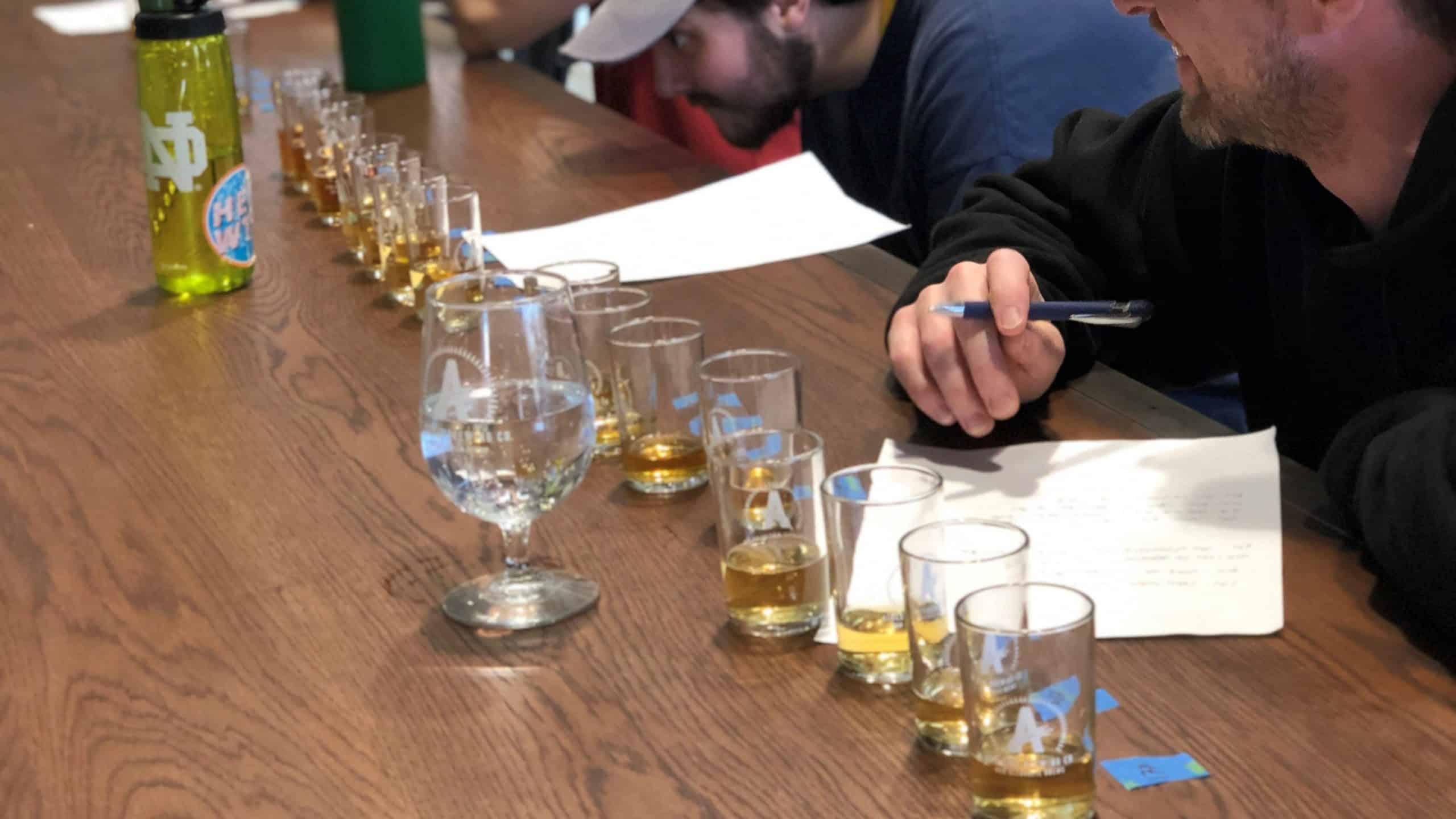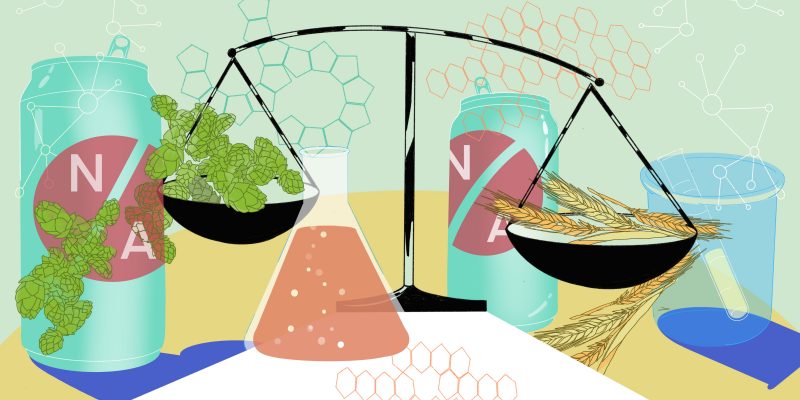A Commentary with Stephen Beaumont
In 2016, the world’s largest brewer made the grand pronouncement that, by 2025, a full 20% of the company’s sales were expected to come from non-alcoholic beverages. And just like that, breweries and beer merchants large and small, local and international, began paying attention to the non-alcoholic beer market.
Which bring us to today, over five years later, and a veritable torrent of non-alcoholic beer releases. From a relative paucity of such brands as little as a decade ago, virtually all in the mainstream lager style, we now have shelves groaning with options, crafted in almost every beer style under the sun, from stout to sour and pale ale to, of course, IPA. Even the government-owned purveyor of alcoholic beverages in the Canadian province of Ontario, the LCBO, has seen fit to list over a dozen “non-alcs” among its beer offerings.
All this despite the fact that, according to statistics recently published in Forbes magazine, non-alcoholic products accounted for less than 2% of the U.S. beer market in 2020.
Still, modest though they may be at present, there is little question that sales of non-alcohol beer in North America are growing, by up to 10% annually, depending upon which industry tracker you cite. Small wonder breweries of all sorts are seeking to claim a piece of the alcohol-free action.
Of course, in an increasingly crowded market segment that isn’t terribly large to begin with, crafting the proper approach is key.
Step one is to know and understand what you are doing. While this particular piece of advice might appear self-evident, there are more than a few examples on the market today which suggest it is not, such as the can of beer that recently ruptured in my air-conditioned office because its purportedly non-alcoholic contents had fermented to the point that the can’s seams could no longer contain it. Aggressive fermentation in a can is never a good thing, but it’s particularly egregious when it creates alcohol in a product not meant to have any.
At this stage, it is also worth considering whether you might wish to craft a beer-adjacent alcohol-free drink, such as a sparkling hop water or something similar to Suntory’s All-Free, billed a “beer-like beverage,” rather than a beer without alcohol.
It deserves mention, too, that one needs to be aware of the definition of ‘non-alcoholic’ or ‘alcohol-free’ as it pertains to beer or, in some constituencies, ‘malt beverages,’ since this varies by country. In the United States, Canada, and Germany, for instance, ‘non-alcoholic’ means a beverage with less than 0.5% alcohol by volume (ABV), while in Great Britain the limit is 0.05% and in the Netherlands it is 0.1%. ‘Alcohol-free,’ which one might presume to mean largely the same thing, does not, and in the United States, at least, designates a malt beverage with no detectable level of alcohol at all.
Another aspect to consider is the production process used to craft the alcohol-free beer, as there are a variety of options available. Some of these are fermentation-related, such as an ‘arrested’ or halted fermentation, or the use of yeast strains with limited capacity to assimilate fermentable sugars, while others are based upon thermal methods, like thin or falling film evaporators, vacuum distillation, or membrane separation, as with reverse osmosis and dialysis, which aim at reducing the alcohol present post-fermentation. The choice of technology will have implications on the amount of capital needed, as well as an impact on flavour development.
Process now ironed out, it is time to decide upon style and flavour characteristics, bearing in mind that the most popular craft styles do not necessarily translate well to the alcohol-free arena. And here I am referring quite specifically to IPA.
Judging by the number I have sampled over the last several months, it would appear that the creation of a no-strength IPA may very well be the ‘holy grail’ of non-alcoholic beer brewers. The reality, however, is that the hop bitterness expected of an IPA absent the support of the body and alcohol found in a full-strength brew often results in a sharp and unpleasant taste. (There is a reason most hop waters are much more about hop aroma than they are hop flavour.)
So rather than rely on bitterness or even, in common parlance, juiciness in your alcohol-free IPA, consider leaning heavily or even exclusively on the olfactory characteristics of the hops rather than their potentially disruptive bitterness. There are now options that can help brewers with this goal, such as the use of hop extracts containing mostly hop essential oils and beta acids which will provide aroma without excessive bitterness.

An alternate route, albeit one unlikely to win fans among craft beer ‘hopheads,’ is to take a cue from the ‘malta’ beers popular in the Caribbean and parts of Asia. Such brands, including Malta Heineken and Malta Carib, are made from malted barley but left unfermented so that they are lightly to moderately sweet, full bodied, and when served properly chilled, somewhat reminiscent of such malt-forward beer styles as brown ale and stout.
And here I must add a note of caution related to my earlier tale of the rupturing can of beer. Non-alcohol beers contain a much larger amount of yeast nutrients such as sugars and proteins, so that if any microorganisms are present, they will much more easily grow in the package. Thus, many non-alcohol beers require pasteurization to ensure shelf stability, a consideration that grows exponentially in the case of sugar-rich ‘maltas’.
Extrapolating from that premise, it is easy to see where stout, porter, brown ale, or even the typically high strength Scotch ale might be worthy candidates for the non-alcoholic field, and judging from the relatively small handful of examples I have tasted, it would appear that indeed they are. Whether they will fare as well in a world gone IPA-mad is, of course, another matter entirely, but sometimes one must simply have faith that great taste will ultimately carry the day.
And finally, there is the matter of flavourings in the form of fruits, herbs, spices, and even such ingredients as chocolate and coffee. Again, judging solely by the number of examples I have personally seen and tasted, it would seem a popular approach, and for the most part I find it is one which works well with a lack of alcohol, although consideration should be given to the labelling implications resulting from their use. Key to getting it right, though, is the employment of ingredients that taste as natural as possible, bearing in mind that what some might consider a ‘fake beer’ accented by flavours that likewise taste artificial is unlikely to win many converts.
So, yes, there is great opportunity to develop new non-alcohol beers. The choice of style, ingredients, and process, though, will be key to success.



